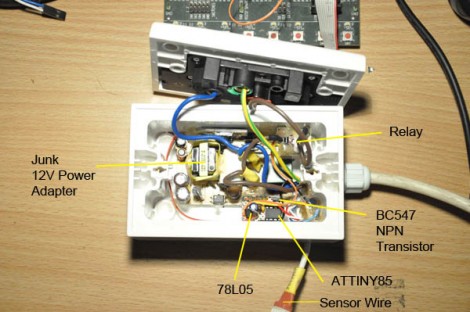An essential skill for a maker is the ability to improvise or re-purpose existing materials into new parts. Sometimes, one needn’t make many modifications to create something new, as is the case with [Robin Sterling] and his musical pet bowl.
Originally, it was a sealed pet bowl that opened when the proximity sensors detected an approaching pet. Having helped design the bowl, [Sterling] had a bit of an advantage when he decided to convert it into a theremin/light harp-esque instrument for the company BBQ. He routed the PWM outputs from each of the three proximity sensors (in each of the three bowls) to a small guitar amp, adjusting each sensor’s output to a different frequency. Despite the short amount of time [Sterling] had to practice, it works fairly well!















